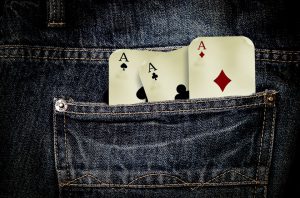 Earlier, we discussed how the mind is divided into neural networks. Connections formed between neurons are strengthened by repetitive actions and weaken if not activated. Thus, if certain continuous actions are performed, the aforementioned neural networks gradually form and change. These networks are the foundations of our psyche – all our knowledge and abilities lie within these structures.
Earlier, we discussed how the mind is divided into neural networks. Connections formed between neurons are strengthened by repetitive actions and weaken if not activated. Thus, if certain continuous actions are performed, the aforementioned neural networks gradually form and change. These networks are the foundations of our psyche – all our knowledge and abilities lie within these structures.
Learning can be defined as any change between connections in our neural networks. Whenever a connection is strengthened or weakened (in any way), we call it learning (except for changes caused by injury or exhaustion). You might protest that this concept includes too much, but sometimes the same neural networks will make you play worse. If your mind convinces you that J4o is a successful hand, that is already a change, showing how your neurons interpret J4o. And do we really want to call such a process learning?
Undoubtedly. It is essential to understand that we cannot preconceive notions about learning or think that learning only occurs when we are seriously and productively studying. Cognition involves trial and error, so learning incorrect actions is an inevitable and very important part of the learning process, especially in the early stages of network development. Thus, to counterbalance one bad habit, you need to learn two good ones.
Now let's try to propose that there exists some ideal neural construction. We can call it the “optimal network.” This network is the mind of a perfect poker player – the perfect structure for playing poker. Your own network has its shape, probably simpler than the optimal one. If you overlay your structure on the optimal one, like placing a copy over the original, all the discrepancies between your game and the perfect game would be evident. All we want is to train our neural networks so that these differences disappear.
These trainings occur naturally because the shape of the optimal network yields the most money in the long run, and you are conditioned by what earns you money, so you are automatically drawn to this network shape. The process is very similar to natural selection. And yet, achieving all this on your own is challenging. If everything were simple, everyone who played millions of hands would become an excellent player. Why does the path get blocked as you move towards the optimal form?
There are many reasons – lack of complex situations (avoiding playing in complex situations), constant cognitive shifts and misunderstandings, lack of critical self-observation, motivation and encouragement from factors other than money (e.g., excitement, etc.), and sometimes the obstacles of intricate moves (such as a risky action that is effective if you have certain cards but catastrophic otherwise). All these obstacles are faced by the learner, who is not directed in the right direction.
(e.g., excitement, etc.), and sometimes the obstacles of intricate moves (such as a risky action that is effective if you have certain cards but catastrophic otherwise). All these obstacles are faced by the learner, who is not directed in the right direction.
Imagine for a moment that learning poker is like mapping a minefield. When you start, your poker territory map is very simple; you don't understand what is good or bad, everything just looks like an empty field. The real reality (the optimal one, the true poker map) is very complex, but you don't know that yet. You just see an empty map. The only way to get more information and fill in your map is exploration. You have to find where the mines are hidden. As you travel through that territory, you discover mines (these are bad actions) and safe zones (these are good actions). But in poker, unlike a real minefield, you won't lose a limb by stepping on a mine. You might lose a pot, but you are still allowed to play. At worst, you might start punching the wall. So poker encourages us to take risks, make mistakes. Explore as much as possible, find out what works and what doesn't. The more data you have, the better and faster you will understand this territory. The ideal way to learn is the one that reveals the territory ahead of you the fastest and most thoroughly.
Learning poker is hard. If it were easy, it wouldn't be profitable. But understanding what it means to learn poker (that it is the formation of our neural networks towards an optimal structure) gives us valuable insights. It is a path of trial and error, constant feedback, and adjustment. When learning, our goal is to accelerate and optimize this process as much as possible. We want to make the most of the available data, increase the pace of neural network training, and assimilate the acquired knowledge as best as possible. It is entirely true that if you do not test the limits of any skill, do not challenge yourself, you do not improve.
Once, an experiment was conducted with Olympic ice skaters. It showed that the athletes who achieved the best results were those who made the most mistakes during rehearsals. Instead of taking mistake-making as a bad sign, think of it as a sign that you are pushing your skill level.
So the key to learning is the willingness to have a strategy that involves a lot of risks. You are playing a game of Minesweeper, only your lives never run out. Move around, make mistakes. Ultimately, every mistake is an opportunity to gain new experience about the territory and use this advantage in the future.
Haseeb Qureshi





